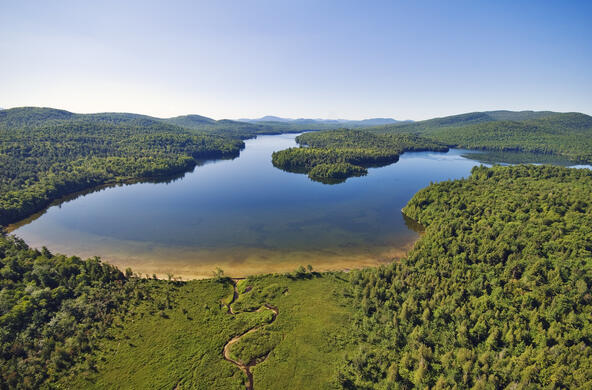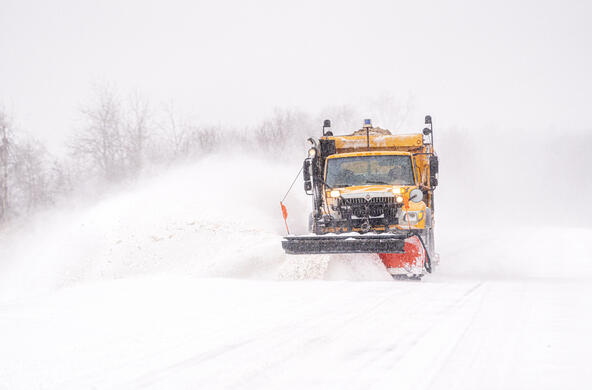With winter right around the corner, many municipalities are oiling up their snowplows in preparation for the first storm. As part of that effort, each year about a million tons of road salt are applied to roads in New York state. What happens to all that salt?
Road salt, rock salt or sodium chloride, which chemists know as NaCl, is the same stuff that is in your salt shaker at home. It lowers the freezing point of water, and it is effective at melting the snow and ice from roadways in temperatures as low as 20 degrees Fahrenheit. When water runs off of treated roads, dissolved road salt washes into nearby ponds and rivers. Near Millbrook, more than 90 percent of the sodium chloride in Wappinger Creek is from road salt.
Salt occurs naturally in the environment. It is generally nontoxic, and high concentrations are not found outside of areas containing geologic salt deposits. Indeed, salt is used widely to preserve and flavor food and to regenerate home water softeners. In most cases, drinking water is only a small source of the total daily salt intake by the public, even in areas where water is derived from wells.
Like most chemicals, too much salt is toxic. And humans are inadvertently increasing the salinity of freshwater resources through routine road salt application. If salt continues to accumulate at its present rate, in our region many surface and well waters will be unhealthy for humans and wildlife by the end of this century.
In Dutchess County, chloride concentrations are the highest in streams that pass through densely populated areas. Groundwaters refresh very slowly. This means that they are slow to increase in salt, but also slow to flush salt when new inputs stop.
Approximately 20 percent of the wells in Dutchess County now have salt concentrations restricting their use by residents with high blood pressure.
Some organisms are already suffering from salt inputs. Excess salinity has been shown to impede the survival of spotted salamanders and wood frogs living in roadside ponds.
Current efforts to preserve vernal pools in woodlands are potentially compromised by salt, which can travel up to 200 yards from the edge of roads. Road salt has detrimental effects on the growth of roadside maple trees, and the spray from road salt produces an obvious "burn" on the foliage of many conifers, such as white pines.
A recent workshop for elected officials and highway maintenance personnel held at the Cary Institute concluded while excessive salt is not a crisis in Dutchess County, the trends are worrisome. Village, town and county officials could opt to reduce salt usage, improve efficiency of application, or consider substitutes to avoid a future environmental issue.
There are several classes of alternatives. Already some municipalities use a mix of sand to reduce the total amount of salt applied. And, for some types of storms, a small amount of calcium chloride can be applied to reduce the overall rock salt needed - saving money.
Various acetate salts are less corrosive but may have other environmental effects and are generally more expensive for widespread application. They can be employed in areas where sensitive ecosystems are nearby. Urea is another alternative; it is non-corrosive but has significant odor.
The most important player in winter driving is, of course, you and me. We want to be safe on the road, and we want to know that emergency vehicles can travel rapidly.
But, maybe we shouldn't expect to drive at 55 mph on all roads all winter. Fewer tax dollars would be spent on salt, our cars and bridges would last longer, and roadside ponds would be alive with the sound of spring peepers.
Everyone gains when we slow down, and perhaps even stop to enjoy the woods on a snowy evening.








